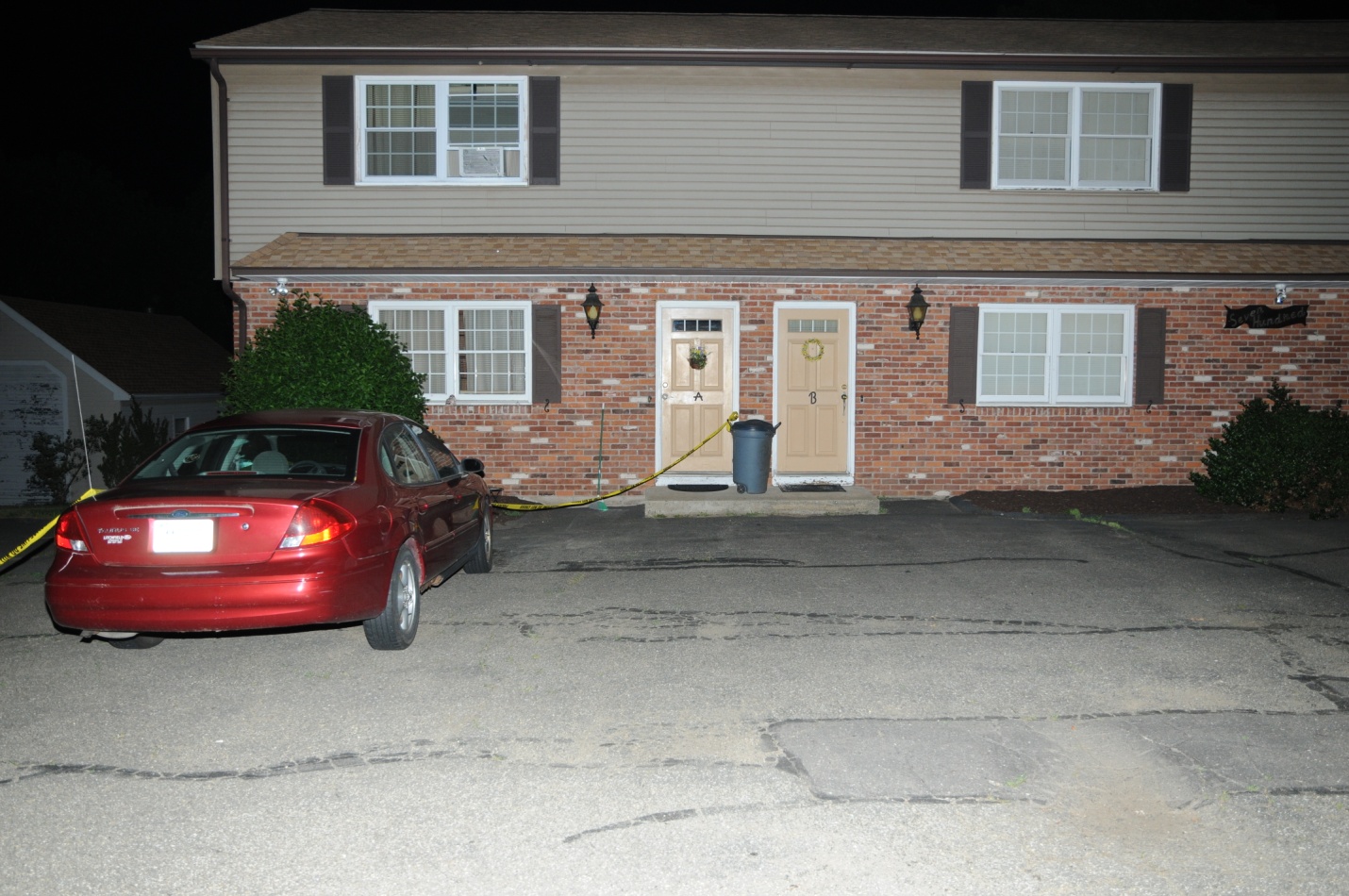Report of the State's Attorney for the Judicial District of New Britain Concerning the Death of Daniel Reyes on June 26, 2016, in the Town of Thomaston [1]
Legal Authority for the Report | Factual Findings | Law Regarding the Use of Deadly Physical Force by a Police Officer | Determination Concerning the Appropriateness of the Use of Force | Future Action to Be Taken by the Division of Criminal Justice
Connecticut General Statutes Section 51-277a provides:
(a) Whenever a peace officer, in the performance of such officer’s duties, uses physical force upon another person and such person dies as a result thereof, the Division of Criminal Justice shall cause an investigation to be made and shall have the responsibility of determining whether the use of physical force by the peace officer was appropriate under section 53a-22. The division shall request the appropriate law enforcement agency to provide such assistance as is necessary to determine the circumstances of the incident.
(b) In causing such an investigation to be made, the Chief State’s Attorney shall, (1) as provided in section 51-281, designate a prosecutorial official from a judicial district other than the judicial district in which the incident occurred to conduct the investigation, or (2) as provided in subsection (a) of section 51-285, appoint a special assistant state’s attorney or special deputy assistant state’s attorney to conduct the investigation. The Chief State’s Attorney shall, upon the request of such prosecutorial official or special prosecutor, appoint a special inspector or special inspectors to assist in such investigation.
(c) Upon the conclusion of the investigation of the incident, the division shall file a report with the Chief State’s Attorney which shall contain the following: (1) The circumstances of the incident, (2) a determination of whether the use of physical force by the peace officer was appropriate under section 53a-22, and (3) any future action to be taken by the Division of Criminal Justice as a result of the incident. The Chief State’s Attorney shall provide a copy of the report to the chief executive officer of the municipality in which the incident occurred and to the Commissioner of Emergency Services and Public Protection or the chief of police of such municipality, as the case may be.
A. Circumstances of the Incident
On Sunday, June 26, 2016, Danny Reyes of 700 High St. Extension, Apt A,
Thomaston, Connecticut called 911 at approximately 7 o'clock in the evening and
reported that there were lives in danger at that location. He then gave his
mother a kiss telling her that he loved her. Mr. Reyes left a note on a table by
the front door and exited the apartment armed with a black handled stainless
steel knife. The note that Mr. Reyes left for his mother was consistent with a
suicidal ideation. In it he states:

|

|
|
The note recovered from Mr. Reyes home. | |
Daniel Reyes was a young man with serious, chronic mental health issues. He had a lengthy history of psychiatric hospitalizations, including recent inpatient hospitalizations. He suffered from command auditory hallucinations, anxiety, psychosis and paranoia. During his last inpatient psychiatric hospitalization in March 2016, his mother related to providers that he was spiraling downward. In the month prior to his death, he refused to take his prescribed medications and his mother, with whom he lived, noted that he had been acting strangely during the time immediately prior to this incident and engaging in behavior that made her believe that he was suffering from increasing paranoia.
The 911 dispatcher in Thomaston called back the number from which Mr. Reyes had made his 911 call and spoke to his mother. His mother reported to the dispatcher that there was no problem at the residence. Nonetheless, and in accordance with Thomaston Police Department policy, patrol officers were dispatched to 700 High Street Extension, Apt. A, to ensure that no one was in danger.

The first Thomaston officer to arrive at 700 High Street Extension was Officer Keith Koval. Officer Koval was operating a marked cruiser and wearing a full uniform. He arrived at the home shortly after 7 o’clock that evening and observed Mr. Reyes standing in the driveway with a knife in his hand. Officer Koval, observing the knife, remained in his cruiser and made contact with Mr. Reyes. Mr. Reyes immediately challenged Officer Koval to exit his cruiser and draw his weapon. Officer Koval declined, remaining in his cruiser and asking Mr. Reyes what was going on. Mr. Reyes responded that he would not talk to him until he exited his cruiser and drew his weapon. Mr. Reyes was becoming increasingly agitated by Officer Koval’s refusal to exit his cruiser and Officer Koval began backing his cruiser up to create distance between himself and Mr. Reyes.
Shortly after Officer Koval arrived on scene, Officer Richard Galpin arrived on scene. Officer Galpin also was operating a marked police vehicle and wearing a full uniform clearly identifying his as a police officer. Officer Galpin exited his cruiser, locked the doors utilizing the key fob and tucked the fob into his belt. After exiting, he observed Mr. Reyes look in his direction and begin walking toward him. Simultaneous to this, he heard Officer Koval report on the radio that Mr. Reyes was armed with a knife. Officer Galpin observed the knife in Mr. Reyes right hand, which prompted him to draw his firearm and command Mr. Reyes to stop and put the knife down.
 |
 |
|
Close-up view of the knife recovered from the scene (left) and as found at scene (right). | |
Officer Galpin attempted to retreat to the safety of his vehicle, but was unable to do so with the doors locked and the key fob tucked in his belt. Officer Galpin gave Mr. Reyes repeated commands to stop and drop the knife, which were ignored by Mr. Reyes, who continued to advance while armed with the knife. Mr. Reyes responded to Officer Galpin’s commands by telling the officer to shoot him. As Officer Galpin backed away while commanding Mr. Reyes to drop the knife, Mr. Reyes continued to advance while telling Officer Galpin to “do it”. Officer Galpin made almost a complete circle around his vehicle as Mr. Reyes continued toward him disregarding his commands. With Officer Galpin near the front passenger side of his vehicle and Mr. Reyes at the rear passenger side of the vehicle, Mr. Reyes raised the knife he was carrying pointing the tip at Officer Galpin and began to move quickly when Officer Galpin fired a single shot from his department issued .45 caliber handgun. Mr. Reyes immediately fell to the ground. After Mr. Reyes fell, officers immediately began CPR after ensuring the knife he was brandishing was out of his reach. Despite these efforts, Mr. Reyes died shortly after being shot.
These events were observed in whole or part by several neighbors. The neighbor with the best vantage point observed the incident from the second floor of his residence and was able to both hear and see Mr. Reyes, armed with a knife, disobey multiple commands to drop the knife while continuing toward Officer Galpin and challenging him to “shoot him in the head”. This neighbor estimates that Mr. Reyes was between 8-10 feet away from Officer Galpin and continuing to approach him at the time Officer Galpin fired a single shot striking Mr. Reyes and causing him to fall to the ground.
In addition, two neighbors working in their yard approximately 100 yards away also observed portions of this encounter relating a version of events consistent with the officers involved and the other civilian witness. However, given the distance from which they observed events, there is considerably less detail in what they were able to relate. [2]
The Thomaston Police Department notified the Litchfield State’s Attorney and the Connecticut State Police within an hour of Mr. Reyes being shot. The Thomaston Police immediately secured the scene of the shooting and ensured the preservation of relevant physical evidence pending the arrival of the Connecticut State Police and members of the Litchfield State’s Attorney’s Office.
In accordance with Division of Criminal Justice Policy 509, Guidelines for Investigation of the Use of Physical Force Pursuant to General Statutes 51-277a, Litchfield State’s Attorney David Shepack and Inspectors from his office responded to the Thomaston scene. Chief State’s Attorney Kevin Kane was notified and in accordance with Connecticut General Statutes Section 51-277a (b), the Chief State’s Attorney designated the undersigned to conduct this investigation. The undersigned responded to the scene with Inspectors from the New Britain Judicial District and relieved State’s Attorney Shepack shortly before midnight on June 26, 2016. By this time, the Connecticut State Police Central District Major Crime Squad had assumed responsibility for the crime scene and had already begun the process of identifying witnesses and gathering evidence.
In summary, the Connecticut State Police Central District Major Crime Squad processed both the exterior scene at 700 High Street Extension and the interior of the residence Mr. Reyes shared with his mother. They canvassed the neighborhood for witnesses, interviewing numerous individuals. They obtained voluminous medical records, thoroughly interviewed the Thomaston Police Department personnel involved in this incident and submitted the entirety of their investigative efforts to the undersigned. [3]
C. The Postmortem Examination
Dr. James Gill, the Chief Medical Examiner, performed a postmortem examination on Mr. Reyes on June 27, 2016. Dr. Gill found a single entrance wound from a gunshot in Mr. Reyes’ chest that traveled from front to back in a slightly downward direction and left to right. There was an exit wound in Mr. Reyes’ back. The bullet perforated the sternum, right atrium of the heart and hilum of the right lung. Dr. Gill determined the cause of Mr. Reyes death to be a gunshot wound of the trunk with perforations of the heart and lung. [4]
Law Regarding the Use of Deadly Physical Force by a Police Officer
Section 53a-22(c) of the Connecticut General Statutes permits a police officer to use deadly physical force upon another person when he reasonably believes such force to be necessary to defend himself or a third person from the use or imminent use of deadly physical force. Section 53a-3(5) of the Connecticut General Statutes defines “deadly physical force” as physical force that can be reasonably expected to cause death or serious physical injury. Section 53a-3(4) of the Connecticut General Statutes defines “serious physical injury” as physical injury that creates a substantial risk of death or which causes serious disfigurement, serious impairment of health, or serious loss or impairment of the function of any bodily organ.
The test to determine an officer’s reasonable belief is both subjective and objective. First, the officer must believe that the use of deadly force is necessary to defend himself or another from the imminent use of deadly physical force. The police officer must honestly believe that this level of force is necessary in the immediate circumstances. In other words, the subjective portion of the test considers whether the police officer believed the use of deadly physical force was his only reasonable choice under the circumstances.
The second, objective, part of the test requires that the officer’s belief be objectively reasonable. State v. Smith , 73 Conn. App. 173, cert. denied, 262 Conn. 923 (2002). The test is not whether it was in fact necessary for the officer to use deadly physical force in order to defend against the imminent use of deadly physical force. The test is whether the officer believed it was necessary to use deadly physical force and whether such belief was objectively reasonable, based on the facts and circumstances known to the police officer at the time the decision to use deadly force was made. Cf. State v. Silveira , 198 Conn. 454 (1986); State v. Adams , 52 Conn. App. 643 (1999).
Simply stated, the test considers whether a reasonable officer placed in the shoes of the subject officer would have found it necessary to use deadly force under the circumstances.
The United States Supreme Court has explained this test in a civil rights case: “The ‘reasonableness’ of a particular use of force must be judged from the perspective of a reasonable officer on scene rather than with the 20/20 vision of hindsight. . .The calculus of reasonableness must embody allowance of the fact that police officers are often forced to make split-second decisions - in circumstances that are tense, uncertain, and rapidly evolving—about the amount of force that is necessary in a particular situation.” Graham v. Connor , 490 U.S. 386 at 396-397 (1989). “The appropriate inquiry is whether the officers acted reasonably, not whether they had less intrusive alternatives available to them.” Scott v. Henrich , 39 F.3d. 912, 915 (9th Cir. 1992).
Determination Concerning the Appropriateness of the Use of Force
On the evening he was killed, Mr. Reyes was suicidal and determined to ensure that he would die at the hands of a police officer. In furtherance of this, he placed a call to the Thomaston Police Department that he knew would require police to respond to his home. He left a note for his mother and armed himself with a kitchen knife before going outside to confront the responding officers. Unfortunately, Officer Galpin did not realize the Mr. Reyes was armed at the time he exited and locked his vehicle. Officer Galpin attempted to retreat from Mr. Reyes and ordered him multiple times to drop the knife with which he had armed himself. Mr. Reyes continued toward Officer Galpin, disregarding multiple verbal commands from both Officers to drop the knife he was holding. It was only when Mr. Reyes was within 8-10 feet of Officer Galpin that he fired the single shot that ended Mr. Reyes’ life.
There can be no serious question that a reasonable officer placed in the shoes of Officer Galpin would have found it necessary to use deadly force under these circumstances. Officer Galpin was confronted by an individual armed with a dangerous instrument capable of causing serious physical injury [5] who consistently approached him while brandishing that instrument and ignoring repeated commands to disarm himself. Mr. Reyes did not want to give responding officers any choice other than to use deadly force on him and, tragically, Officer Galpin had no other reasonable alternative.
The use of deadly physical force on Daniel Reyes by Officer Richard Galpin was appropriate and justified by Section 53a-22(c) of the Connecticut General Statutes.
Future Action to be Taken by the Division of Criminal Justice
No further action with respect to Officer Richard Galpin is to be taken by the Division of Criminal Justice as a result of this incident.
Although no further action is recommended by the Division of Criminal Justice with respect to Officer Galpin in this matter, it is difficult to ignore the prevalence of encounters between emotionally disturbed individuals and police officers in Connecticut that result in the use of deadly force. [6] This is not an issue unique to Connecticut. It has been estimated that an individual suffering from mental illness is sixteen times more likely than someone not suffering from mental illness to be killed during a police encounter. [7]
Police officers in Connecticut are required to receive training both prior to being certified and during the recertification process in handling encounters with individuals appearing to be emotionally disturbed. The Division of Criminal Justice, as the agency with the ultimate constitutional responsibility for enforcing the criminal laws of this State [8], may consider partnering with other stakeholders to consider whether the quantity and nature of this training is consistent with current best practices. [9] In addition, although Connecticut has a number of police departments with officers trained as Crisis Intervention Team Patrol Specialists [10], one result of Connecticut’s preference for local government is a proliferation of small police departments that lack the resources to ensure that trained CIT patrol specialists are available to respond as needed. [11] The Division may, in partnership with other stakeholders, wish to consider whether this is an issue that merits further consideration.
Respectfully Submitted,
Brian Preleski
State’s Attorney for the Judicial District of New Britain
[1] On June 26, 2016, the undersigned was designated by Chief State’s Attorney Kevin Kane to conduct this investigation in accordance with Connecticut General Statutes Sections 51-277a (b)(1) and 51-281.
[2] One of these witnesses initially reported that she believed Mr. Reyes had a gun in his hand, but subsequently conceded that she could only say he had an object in his hand and was approaching the officer who was retreating at the time he fired his weapon. She reported that the officer was saying something and she assumed he was telling Mr. Reyes to drop his weapon, but could not hear what was being said.
[3] With the exception of material the disclosure of which would be unduly invasive to the privacy of the individuals involved, such as medical records, the entirety of the Connecticut State Police materials submitted are available for public inspection at the Office of the New Britain State’s Attorney, 20 Franklin Square, New Britain during regular business hours. In issuing this report, the undersigned received important assistance from the Connecticut State Police Central District Major Crime Squad and the Office of the Chief Medical Examiner. Their assistance and expertise permitted the undersigned to have a complete and thorough investigation. In addition, I would like to acknowledge the assistance of the members of the Thomaston Police Department, all of whom cooperated with this investigation.
[4] Dr. Gill determined the manner of death to be: “Suicide (Intentionally provoked police to shoot)”.
[5] The body armor worn by Officer Galpin, like many common varieties of body armor worn by police officers, was not stab resistant.
[6] A review of prior reports prepared concerning the use of force by police that results in death reveals a number of instances involving encounters with emotionally disturbed individuals:
Seth Victor (September 3, 2013)
Incident
New Britain Police Department received a phone call from John Wiznewski, the owner of 141 Broad St., who reported that one of his tenants, Seth Victor, was going crazy, high on some type of drug and throwing items out of his window. Upon arrival, Mr. Victor was clearly emotionally unstable. Police shut down the streets surrounding the apartment for several hours while attempting to talk Mr. Victor into going to the hospital. After eventually making entry, a violent struggle ensued culminating in Mr. Victor’s death from a heart attack.
Mental Health Conditions
Mr. Victor had a substantial history of mental health problems, which had apparently worsened over the past several weeks. He had been previously hospitalized in connection with mental illness, heard voices, suffered from bipolar disorder and had stopped taking his prescribed psychiatric medications.
Tyrinde Mason-Thompson (June 9, 2015)
Incident
Police were called to Mr. Mason-Thompson’s home after receiving reports that he was experiencing a mental health crisis. Upon seeing the police officers, Mr. Mason-Thompson ran away. After some pursuit, Mr. Mason-Thompson confronted the police officers with two knives. Police officers told him to put down the weapon several times and, upon his refusal, tased Mr. Mason-Thompson. Mr. Mason-Thompson continued advancing, causing an officer to fire three rounds, two of which hit Mr. Mason-Thompson. Mr. Mason-Thompson claims that he was trying to run from a police officer to his left when he noticed that he was running towards another police officer while still holding the knife. At this point, he was shot. Mr. Mason-Thompson was in critical condition, but did not pass as a result of this incident.
Mental Health Conditions
At the time of her call, Mr. Mason-Thompson’s mother reported that he “was agitated, upset and yelling, and reported hearing voices.” Furthermore, she told officers that he was not seeing a doctor, taking medication, or participating in any outpatient programs at the time. There had been three other reports of his behavior since 2011, which all noted his paranoia. Ms. Mason-Thompson also remarked the same officers usually responded to calls about her son, and these officers were not familiar with his conditions.
David Werblow (March 15, 2015)
Incident
In a delusional state, Mr. Werblow called 911 to request transportation to the hospital for psychiatric evaluation. When the officer arrived, Mr. Werblow exited the building and “began walking away from him and into the middle of the street.” Mr. Werblow tried to enter the police cruiser but was unable to. He continued down the road, trying to enter another car and a truck. Eventually, he entered a car and refused to exit despite the officer trying to pull him out and warning that he would have to fire his taser at Mr. Werblow. During this exchange, Mr. Werblow was tased a total of seven times and seemed to be unaffected each time. Body camera footage revealed that the officer “told Mr. Werblow to ‘stop’ or ‘get down’ at least forty times before he first deployed his taser.” Other officers then arrived on the scene. Approximately four minutes after Mr. Werblow was handcuffed, an officer found that Mr. Werblow no longer had a pulse. The Chief Medical Examiner stated that the death was likely due to a combination of factors, and not solely from being tased.
Mental Health Conditions
Mr. Werblow “had a long history of mental illness and had been diagnosed with schizophrenia.” He also had a history of not taking his medicine and receiving psychiatric treatment at Yale-New Hospital. At the time of this incident, he was living in a group home for adults with mental illness.
Robert Miessau (February 21, 2006)
Incident
Mr. Miessau called his daughter to threaten suicide, causing her to report to his home. When she arrived, she heard two gunshots, leading her to report a possible suicide to the police. After establishing phone contact with Mr. Miessau, officers arrived on the scene with hostage negotiators and an Emergency Response Team. Mr. Miessau verbally threatened to shoot police and neighbors for three hours, and fired a number of shots from two weapons. Mr. Miessau then left his residence with a long rifle, fired a shot, and continued to aim his weapon at the police perimeter. At this point, an officer shot Mr. Miessau.
Mental Health Conditions
No specific mental health conditions are listed in this report, although Mr. Miessau’s words and conduct suggest that he was suicidal and emotionally disturbed at the time of the incident
Hiram Marrero (December 16, 2004)
Incident
On the day of the incident, staff of the Continuum of Care apartments called 911 to request help with a “delusional and psychotic” Mr. Marrero and to report a possible stabbing. When officers arrived, Mr. Marrero was standing on his back deck with a knife in his hands. After refusing to drop the weapon, Mr. Marrero ran down the stairs and then dropped the knife. As officers approached to handcuff Mr. Marrero, he bent down to retrieve another knife from his sock. At this point, officers shot Mr. Marrero.
Mental Health Conditions
At the time of the incident, Mr. Marrero was living in housing intended to provide shelter for mentally ill adults and staff reported him to be delusional and psychotic.
Tyshan Napoleon (March 11, 2005)
Incident
Mr. Napoleon’s mother and girlfriend called 911 to report his violent behavior, namely threatening his girlfriend with weapons. They reported the kind of car he was driving, and officers followed that car until it collided with a fire hydrant. At this point, Mr. Napoleon left his vehicle holding a shotgun and fired the weapon. He then ran, with police officers yelling at him to drop the gun. When Mr. Napoleon became surrounded by officers, he fired his weapon again, causing the officers to shoot him.
Mental Health Conditions
Mr. Napoleon had been diagnosed with Bipolar disorder and had not taken his medication since approximately September of 2004. Since then, he had become violent, paranoid, and experienced hallucinations.
William Kennan (June 3, 2001)
Incident
Physician’s Assistant Scott Charnitsky called the police to report a drunk and possible suicidal Mr. Kennan. Mr. Kennan was also complaining of chest pains. When an officer arrived on the scene, Mr. Kennan was sitting in a van with a knife in his hand. The officer drew his weapon, at which point Mr. Kennan stated, “Good, that is what I want, do it!” He then held the knife to his chest and stated, “You're going to have to do it. I'm not going to do it. Do it!” He repeated this several times throughout their encounter. The officer told him to drop his knife and tried to diffuse the situation by talking to Mr. Kennan, but he was not receptive. Mr. Kennan cut himself on the chest, held the knife to his throat, and took a deep breath. He then exited the van, walking briskly with his knife pointed towards the officers. At this point, an officer shot Mr. Kennan.
Mental Health Conditions
Mr. Kennan’s wife reported that Mr. Kennan had alcoholism and had attempted suicide 5 or 6 times in the time they had been together. He was not in any treatment at the time of the incident. His wife attempted to get him to the hospital for psychiatric evaluation on the day of the incident, but he refused.
I would like to acknowledge Addison Kimber of the University of Connecticut for her effort in reviewing these incidents in connection with this report.
[7] Overlooked in the Undercounted: The Role of Mental Illness in Fatal Law Enforcement Encounters , Treatment Advocacy Center, December, 2015
[8] Article XXIII of the Amendments to the Constitution of the State of Connecticut.
[9] The Police Officer Standards and Training Council, of which the Chief State’s Attorney is a member (Connecticut General Statutes Sec. 7-294b(5)), is statutorily responsible for establishing “minimum educational and training standards for employment as a police officer…” Connecticut General Statutes Sec. 7-294d (11). It should be acknowledged that POST is a national leader in the development and provision of police training. This report offers no opinion concerning the adequacy of the current POST requirements but given the danger to both emotionally disturbed individuals and police officers during such encounters, it is critical that current practices be periodically reviewed to ensure that they are consistent with emerging national best practices.
[10] http://www.cableweb.org/training/crisis-intervention-teams
[11] This is not, nor should it be interpreted as a criticism of the Thomaston Police Department or any of its members. It is an issue common to virtually every small police department in Connecticut.

